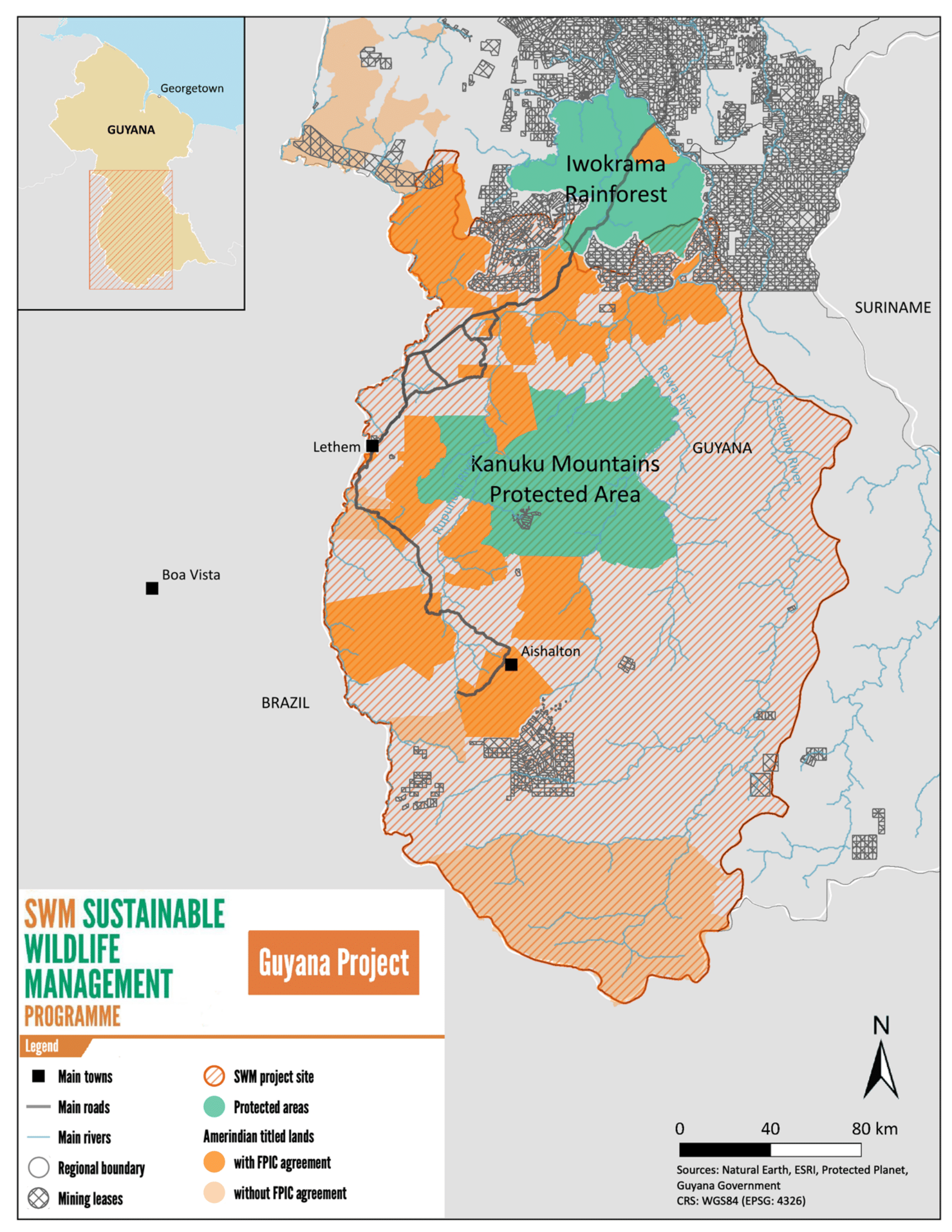Guyana- Customary law – Preconditions
PRECONDITIONS
Customary norms and practices

Guyana

BACKGROUND

The Constitution of the Cooperative Republic of Guyana provides special rights and representation organs for Amerindians. While customary law is not expressly recognized, the Constitution recognizes the right of indigenous people to the protection, preservation and promulgation of their languages, cultural heritage and way of life. It also establishes, for the purpose of strengthening social justice and the rule of law, the Indigenous Peoples’ Commission, whose functions include, among others, the promotion and protection of indigenous people’s rights and the empowerment of Amerindian authorities.
Similarly, the Amerindian Act of 2006 does not explicitly recognize customary law, but it establishes traditional rights for Amerindians understood as subsistence rights or privileges. It also establishes a land demarcation and titling process to grant formal land rights over lands traditionally occupied by Amerindians and formally recognizes Amerindian authorities and representation bodies. The Act gives powers to Village Councils to administer village lands (lands under a land title) and to make rules governing different aspects such as access and occupation of lands and use of natural resources including wildlife and fisheries. Such rules are subject to prior approval by the Minister of Amerindian Affairs and publication in the Official Gazette. Unlike Village Councils, Amerindian communities do not hold similar powers as they do not hold formal land titles.The Rupununi (Region 9) is in the southwest of the country and covers 57 750 km2 with approximately 24000 inhabitants who are mostly indigenous peoples: Wai-Wai in the forested deep south, Wapichan in South and South Central, and Makushi in the North. This section focuses in particular on the Wapichan, whose livelihoods are based on fishing, hunting, rearing domestic livestock and the cultivation of fruit trees.
The Wapichan traditional territory (wiizi) lies in the South Rupununi between the Takutu, Kassikaiytu and Essequibo rivers. The Wapichan wiizi represents an extension of the Rio Branco savannahs in Brazil, and is therefore distinct from other parts of Guyana. It harbours a highly diverse habitat with continuous tracts of primary forest, ‘bush islands’, gallery forests, open and tree savannah, and seasonally flooded wetlands. It is home to many iconic Amazonian species of fish and wildlife, some of which are rare or threatened globally, like the red siskin (Spinus cuculatus), giant anteater (Myrmecophaga tridactyla), yellow-spotted river turtle (Podocnemis unifilis) and black curassow (Crax alector).
In the Wapichan Wiizi, there are 13 main villages and nine smaller satellite communities who are represented in the South Rupununi District Council (SRDC), which is their representative body. Wapichan settlements are spread over a wide area of savannah-forest ecotone. Their modern language is Wapichan which belongs to the Arawak family, but most people have knowledge of English as they attend government primary schools. Portuguese is also widely known due to the proximity with Brazil. The Wapichan Territorial Management Plan developed by the SRDC is based on customary rules and is recognized by Statutory Law.
PRECONDITIONS
Customary practices for land use planning
The extent of Wapichan family-owned lands is defined by agreed boundaries defined by markers in the landscape including creeks, hills, mountains, and farm and hunting lines. Hunting lines are personal hunting paths created by a villager or inherited from a first settler relative. Owners have prior rights of access to the hunting line and the responsibility for sharing its use. Related families often occupy shared farming lands, forming small settlements led by a headman who is usually the man who first surveyed and settled the area, or the first person to inherit the farmlands. The headman is responsible for allocating farming rights to incomers joining the settlement.
Village Councils are the authorities in charge of land use planning and management. Each community has a leader and a spokesperson known as Toshao, who makes decisions about the use of resources through local consultation processes and in compliance with customary laws. The Amerindian Act recognizes Village Councils as the authorities for land use planning within village lands (titled lands). It gives powers to Councils to decide on permits for outsiders to access lands and to make rules governing the qualification as resident, which implies the acquisition of rights as a member of the Amerindian village. The Village Council also has the authority to grant leases over village lands and permits for non-residents to use forests resources in compliance with the requirements of the Amerindian Act.
